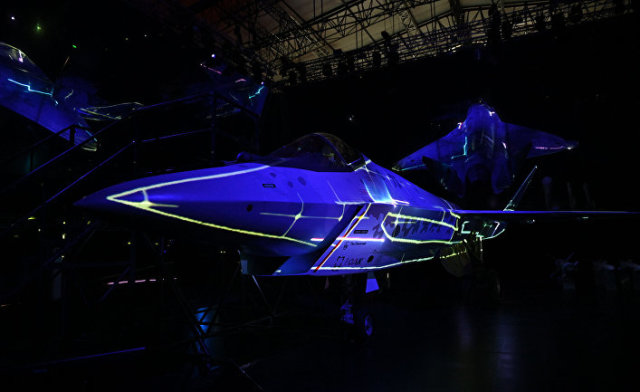The expert from the USA is alarmed: Russia has a very promising and dangerous new stealth fighter. According to its combat characteristics, it significantly surpasses its American "colleagues". Today, the aircraft was demonstrated, and American experts hurried to examine the enemy in detail.
The new Russian stealth fighter has a really big wing. This can mean two things.
First, it is possible that Sukhoi is going to supply its new Checkmate fighter to the Russian fleet for use from a single aircraft carrier.
And it is also possible that Checkmate, which Rostec (the parent company of Sukhoi) clearly expects for the export market, is intended for high altitudes, where a large wing is profitable.
Rostec gradually removed the veil of secrecy with Checkmate on the eve of the MAKS Air show at the Ramenskoye airfield in the Moscow region. At the end of last week, photos of a mock-up or a demo sample under a tarpaulin were leaked. Then the photos of the uncovered plane were distributed. And finally, on Tuesday, Rostec made an official presentation.
The photos reveal the key features of the Checkmate design. Its waterless air intake and angular rudders of direction and altitude indicate a small radar visibility. And a large wing for such a short fighter can mean either a deck-based, or a high ceiling - or both.
A large wing increases vertical thrust and allows the aircraft to rise above a similar design with a smaller wing. The downside is that a large wing slows down the aircraft somewhat and reduces the maximum speed.
The additional thrust is a clear plus for a marine fighter that takes off and lands on the deck of an aircraft carrier. Consider the US Navy's F-35 variant. The deck-based F-35C has a wing almost one and a half times larger than the ground-based F-35A. The large wing helps the F-35C to work safely with the aircraft carrier's steam catapults.
The only aircraft carrier of the Russian fleet, the ever-ailing Admiral Kuznetsov, boasts a 305-meter deck, but it does not have a catapult. The more valuable the large wing will be. Russian aircraft carrier fighters will need all the available thrust.
However, the large Checkmate wing is useful not only in the navy. A high ceiling has obvious advantages in terms of sensor coverage and weapon range. A high-flying fighter sees and shoots further than a low-flying one.
No wonder Lockheed Martin designed its F-22 stealth fighter for the US Air Force to work "at an altitude of more than 15,200 meters". The actual ceiling can reach up to 18,000 meters.
Aviation expert and author of books Tom Cooper (Tom Cooper) believes that the Checkmate flight can be from 12 to 18 kilometers, "if not more". "I would say: it is sharpened for working at high altitude," he said.
High flight also gives an advantage in flight range. But here Checkmate may need help. Its small dimensions seem to hint at a modest internal fuel supply.
David Axe

